-
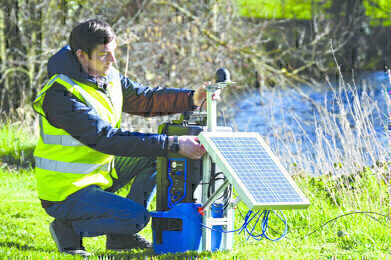 A new Off-Grid Solar Power Pack is now available to power the Aquamonitrix® real-time nitrate and nitrite analyser for high-frequency monitoring of surface and groundwater in the field
A new Off-Grid Solar Power Pack is now available to power the Aquamonitrix® real-time nitrate and nitrite analyser for high-frequency monitoring of surface and groundwater in the field -
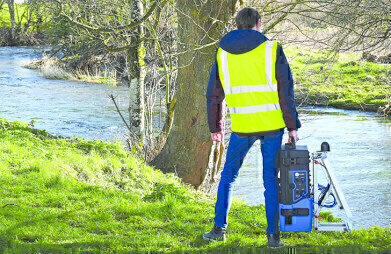
-
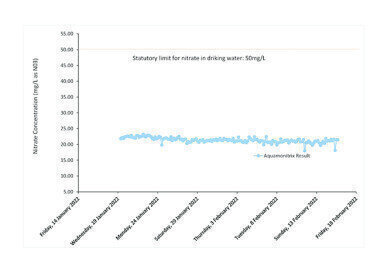 Figure 3: shows real-time nitrate levels
Figure 3: shows real-time nitrate levels -
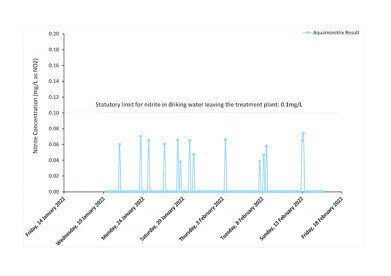 Figure 4: shows real-time nitrite levels in February 2022. The grey lines show the statutory limits for drinking water leaving a treatment plant
Figure 4: shows real-time nitrite levels in February 2022. The grey lines show the statutory limits for drinking water leaving a treatment plant -
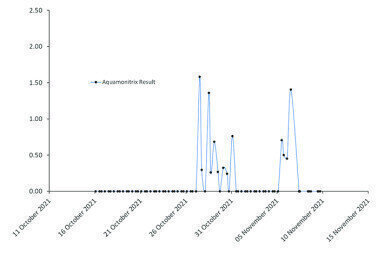 Figure 2: shows the nitrite spikes
Figure 2: shows the nitrite spikes -
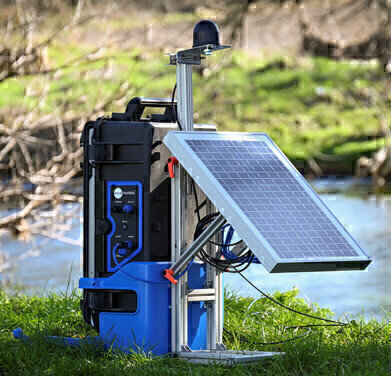
-
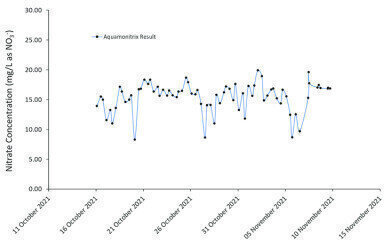 Figure 1: shows nitrate concentrations in October/November 2021
Figure 1: shows nitrate concentrations in October/November 2021
Water/Wastewater
Aquamonitrix® goes unplugged for off-grid nitrate and nitrite monitoring in catchment and borehole studies
Jun 29 2022
For studies of nitrate movement through catchments and aquifers to provide meaningful information, they need to accurately capture the impact of local conditions, such as rainfall, flooding and drought; soil type, pH and microbiology; ground coverage and the underlying geology. This, in turn, requires high-resolution data. But gathering sufficiently high-quality and high-frequency data in the field isn’t always easy.
Addressing nitrate monitoring challenges
“When we spoke to environmental and catchment scientists, many expressed frustration about the amount of recalibration and intervention required to maintain their ion-selective electrode-based analysers within an acceptable accuracy range,” said Aquamonitrix Director John McGrath. “Others said that while their UV nitrate analysers were based in monitoring huts or kiosks, they needed to be out in the field, performing nitrate measurements where the problems were – not just where they happened to have a monitoring station.”
“With the Aquamonitrix® real-time nitrate and nitrite analyser, we have addressed these issues. The analyser is lightweight, portable and can run on either mains power or a solar unit we have developed for long-term, ‘off-grid’ monitoring. It can perform a complete sample and analysis run as frequently as every 10 to 15 minutes, and all the readings are instantaneously transmitted to the user’s PC.”
In terms of ease of use, after an initial, once-off set-up, the calibration remains stable – even if the analyser is moved to a different sample matrix. The only intervention required is an occasional, simple five-minute procedure to top-up the eluent and empty the sample waste container.
Unique design overcomes problems
This performance is achieved through the combination of two technologies. “Our researchers selected UV-LED based detection, because of the lower power requirements compared with conventional UV lamps,” McGrath explains. “But to provide truly bullet-proof, intervention-free monitoring, they knew that UV-LED alone would be insufficient. Outside a laboratory environment, it would require all sorts of compensation and correction algorithms and complex calibration processes. That is why Aquamonitrix® combines UV-LED detection with the separation capabilities of ion chromatography.”
The role of the rapid ion chromatography column is to separate out any organics and act as a trap for turbidity, colour and air bubbles, which are common sources of interference in real-world environments.
Significantly, the column also slows the nitrate anion, allowing any nitrite present to reach the UV-LED detector more quickly, so that both anions are measured separately, providing highly accurate and specific readings for both nitrate and nitrite – even when nitrate levels are high.
The portability, stability and ease-of-use advantages of Aquamonitrix® are easily appreciated. Given the importance of the nitrite intermediate in the progressive oxidation of ammonia to nitrate, the ability to measure both ions independently is also valued in wastewater treatment studies and in recirculating aquaculture systems, where the acute toxicity of nitrite is a significant risk to fish health.
However, because nitrite has been so difficult to measure with high-frequency in the field, the benefits in catchment and groundwater observation studies are less well understood, and sometimes the convenient assumption is that nitrite’s metastable presence can be safely disregarded. But the recent experiences of a number of Aquamonitrix® users now challenge that view.
Case study #1
Pollution source identified through nitrite detection
Dr Paul O’Callaghan is a catchment scientist with Ireland’s Local Authority Water Programme (LAWPRO) for the South-West Region.
The territory he covers encompasses Rosscarbery – a coastal village in West Cork with a tourist industry and an operational fishing harbour, surrounded by pastoral land and several milk-processing co-ops. The area is of ‘moderate’ concern for nitrate, with the harbour impacted by intermittent algae blooms and the smell of rotting algae during summer months.
Dr O’Callaghan explains that the role of LAWPRO is not to police environmental compliance but to identify the issues causing water-quality problems. “We want to understand more about the source and behaviour of nitrogen in the catchment so we can provide better advice about best practice management strategies to keep nutrients in the fields and out of our water systems. This is the win-win outcome everyone wants, and we are working to achieve it through awareness, education and collaboration.”
The team was already using a mains-powered Aquamonitrix® analyser to quantify the nitrate load entering the estuary at Rosscarbery. So, the location was ideal to test the performance of the new solar-power pack, using a second unit to perform ‘off-grid’ monitoring.
Within a fortnight of using the mobile analyser, O’Callaghan picked up elevated nitrite concentrations of 1.58 mg/L (as NO2-) in tandem with typical nitrate levels for the river (of 8.66 mg/L as NO3 -). An assessment of the area revealed the source of the nitrite to be a leaking storage tank on a farm approximately 1km upstream, and this was confirmed with grab samples.
“Finding nitrite didn’t patricianly surprise me,” he says. “When you have ammonia and nitrate, you can expect that nitrite will be in there somewhere.
“By the time the river reached our fixed-position analyser at the entrance to the harbour, the nitrite had already oxidised to nitrate,” he adds. “But our mobile Aquamonitrix® unit revealed that the nitrite pulse persisted for about1km downstream from its source. That would indicate nitrite is less transient than many models suggest.”
Case study #2
Lifting a Nitrite-Related ‘Do Not Consume’ notice
A second instance involved a water utility forced to issue a ‘Do Not Consume’ notice due to nitrite exceedances in the final water leaving one of its smaller drinking-water treatment plants.
“On becoming aware of the nitrite monitoring capabilities of Aquamonitrix®, the company contacted us, and we were able to help them move forward quickly,” John McGrath explains. “As the analyser does not need to be permanently plumbed or wired into place, we had it up, running and delivering results in less than an hour of arriving on site and unboxing the unit.”
Over the following six weeks, Aquamonitrix® achieved an average accuracy of over 95%, compared to the results of grab samples analysed for nitrate and nitrite in an accredited laboratory.
The close agreement with laboratory results, and the fact that there were no further nitrite exceedances, allowed the company to lift the Do Not Consume notice, following consultation and agreement with the Health Authority.
“This was a success story all around,” McGrath says. “Having had the ‘Do Not Consume’ notice in place for the previous 22 weeks, the community had its water supply restored, and the company no longer had to supply bottled water for drinking, food preparation and dental hygiene.”
“If a water company needs to install a continuous monitor at the outlet of a drinking water treatment plant, then it makes sense for them to choose the Aquamonitrix® nitrate and nitrite analyser rather than a standard system that can just measure nitrate,” he adds. “Even if nitrite isn’t currently an issue, there are no additional costs or burdens associated with the simultaneous measurement, and they are future-proofed should nitrite become an issue down the line.”
For further information, contact John McGrath
Digital Edition
AET 28.2 April/May 2024
May 2024
Business News - Teledyne Marine expands with the acquisition of Valeport - Signal partners with gas analysis experts in Korea Air Monitoring - Continuous Fine Particulate Emission Monitor...
View all digital editions
Events
Jul 30 2024 Jakarta, Indonesia
China Energy Summit & Exhibition
Jul 31 2024 Beijing, China
2024 Beijing International Coal & Mining Exhibition
Aug 07 2024 Beijing, China
IWA World Water Congress & Exhibition
Aug 11 2024 Toronto, Canada
Aug 25 2024 Stockholm, Sweden and online








.jpg)








